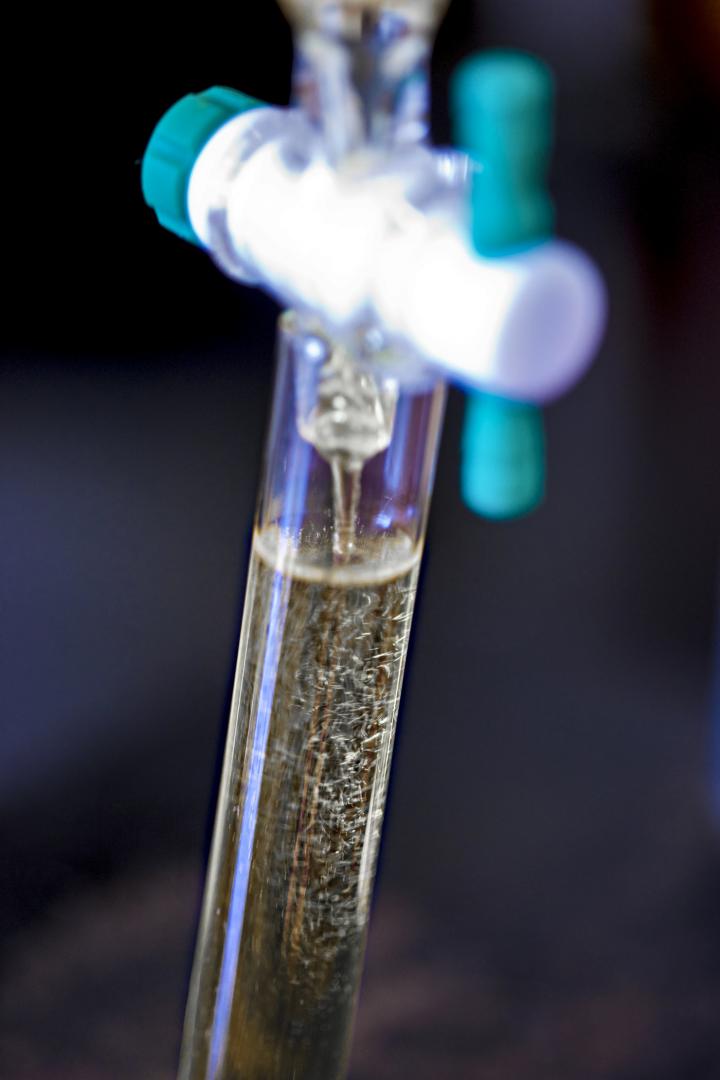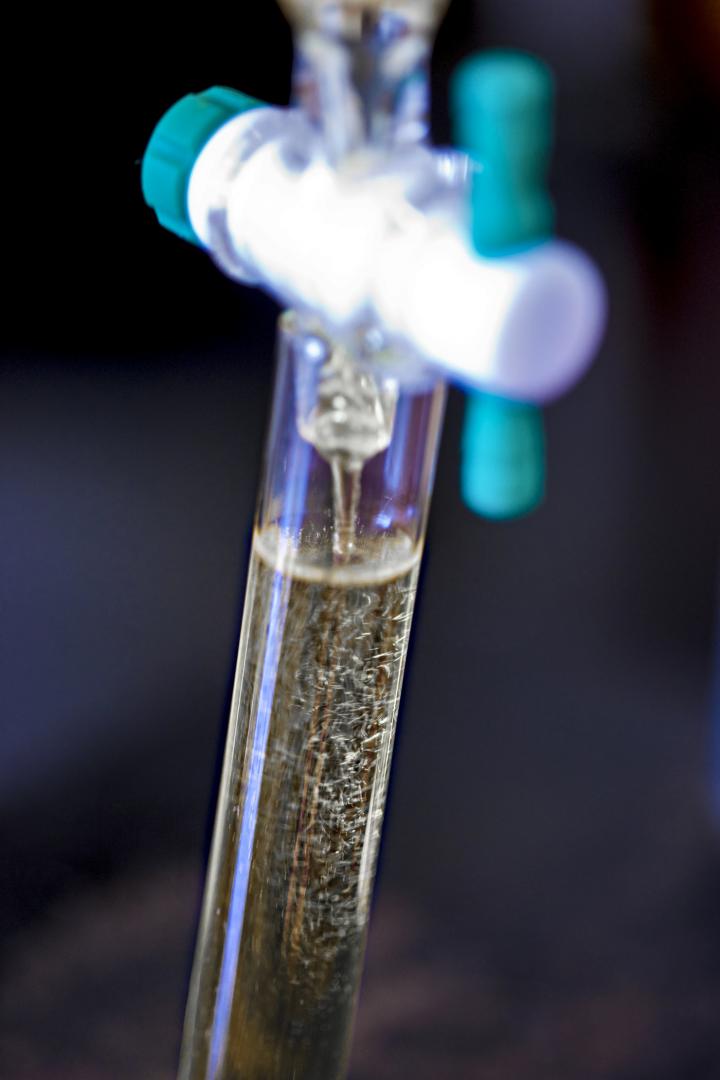
Credit: Salk Institute
LA JOLLA — (Jan. 8, 2018) The experimental drug J147 is something of a modern elixir of life; it's been shown to treat Alzheimer's disease and reverse aging in mice and is almost ready for clinical trials in humans. Now, Salk scientists have solved the puzzle of what, exactly, J147 does. In a paper published January 7, 2018, in the journal Aging Cell, they report that the drug binds to a protein found in mitochondria, the energy-generating powerhouses of cells. In turn, they showed, it makes aging cells, mice and flies appear more youthful.
"This really glues together everything we know about J147 in terms of the link between aging and Alzheimer's," says Dave Schubert, head of Salk's Cellular Neurobiology Laboratory and the senior author on the new paper. "Finding the target of J147 was also absolutely critical in terms of moving forward with clinical trials."
Schubert's group developed J147 in 2011, after screening for compounds from plants with an ability to reverse the cellular and molecular signs of aging in the brain. J147 is a modified version of a molecule found in the curry spice curcumin. In the years since, the researchers have shown that the compound reverses memory deficits, potentiates the production of new brain cells, and slows or reverses Alzheimer's progression in mice. However, they didn't know how J147 worked at the molecular level.
In the new work, led by Schubert and Salk Research Associate Josh Goldberg, the team used several approaches to home in on what J147 is doing. They identified the molecular target of J147 as a mitochondrial protein called ATP synthase that helps generate ATP–the cell's energy currency–within mitochondria. They showed that by manipulating its activity, they could protect neuronal cells from multiple toxicities associated with the aging brain. Moreover, ATP synthase has already been shown to control aging in C. elegans worms and flies.
"We know that age is the single greatest contributing factor to Alzheimer's, so it is not surprising that we found a drug target that's also been implicated in aging," says Goldberg, the paper's first author.
Further experiments revealed that modulating activity of ATP synthase with J147 changes the levels of a number of other molecules–including levels of ATP itself–and leads to healthier, more stable mitochondria throughout aging and in disease.
"I was very surprised when we started doing experiments with how big of an effect we saw," says Schubert. "We can give this to old mice and it really elicits profound changes to make these mice look younger at a cellular and molecular level."
The results, the researchers say, are not only encouraging for moving the drug forward as an Alzheimer's treatment, but also suggest that J147 may be useful in other age-associated diseases as well.
"People have always thought that you need separate drugs for Alzheimer's, Parkinson's, and stroke" says Schubert. "But it may be that by targeting aging we can treat or slow down many pathological conditions that are old age-associated."
The team is already performing additional studies on the molecules that are altered by J147's effect on the mitochondrial ATP synthase–which could themselves be new drug targets. J147 has completed the FDA-required toxicology testing in animals, and funds are being sought to initiate phase 1 clinical trials in humans.
###
Other researchers on the study were A. Currais, M. Prior, W. Fischer, C. Chiruta, D. Daugherty, R. Dargusch and P. Maher of the Salk Institute; E. Ratliff and K. Finley of San Diego State University; P.B. Esparza-Molto and J.M. Cuezva of the Universidad Autonoma de Madrid; and M. Petrascheck of The Scripps Research Institute.
The work and the researchers involved were supported by grants from the National Institutes of Health, California Institute of Regenerative Medicine, the Nomis Foundation, the Della Thome Foundation, the Bundy Foundation, the Hewitt Foundation, the Paul F. Glenn Center for Aging Research at the Salk Institute and the Waitt Foundation.
About the Salk Institute for Biological Studies:
Every cure has a starting point. The Salk Institute embodies Jonas Salk's mission to dare to make dreams into reality. Its internationally renowned and award-winning scientists explore the very foundations of life, seeking new understandings in neuroscience, genetics, immunology, plant biology and more. The Institute is an independent nonprofit organization and architectural landmark: small by choice, intimate by nature and fearless in the face of any challenge. Be it cancer or Alzheimer's, aging or diabetes, Salk is where cures begin. Learn more at: salk.edu.
Media Contact
Salk Communications
[email protected]
858-453-4100
@salkinstitute
Home
Original Source
https://www.salk.edu/news-release/alzheimers-drug-turns-back-clock-powerhouse-cell/





